Social distancing recommendations from the CDC, and other health organizations have been consistent...
In this edition of IntelliSurvey’s “Life in the Time of COVID-19” series, we explore the experiences of social distancing between respondents in the United States and United Kingdom. N = 954 US and n= 810 UK respondents were surveyed on April 3rd and 6th, respectively, on various aspects of social distancing. Specifically, respondents were asked about frequency of social distancing, projected length of their country’s lockdown, and how long they think they can comply with shelter-in-place orders. We also compare perceptions of opening respondents’ respective countries by May 1st and what steps respondents are taking to protect themselves when they go shopping.
UK has greater rates of ‘always’ complying with social distancing
As of April 3rd, upwards of half of US respondents are ‘always’ complying with social distancing. UK respondents (76%) reported an 18% improvement over their US counterparts when surveyed just three days later.
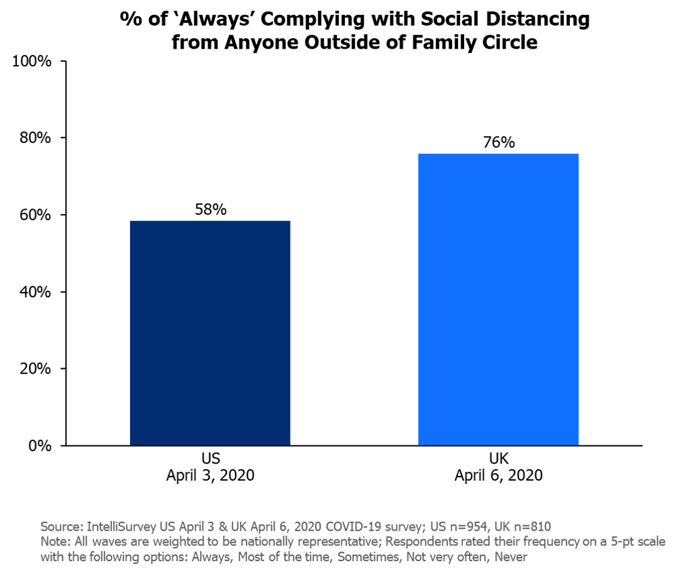
Generational trends are consistent across nations
For the most part, generational trends in ‘always’ social distancing are consistent across the two nations. As populations age, they tend to practice more stringent social distancing. In the UK, Gen Z (67%) is 3% higher in ‘always’ social distancing compared to millennials (64%). The reverse is true in the US by the same margin with Gen Z at 49% and Millennials 52%. There is a 10% and 9% difference between the two younger and two older age cohorts for the US and UK, respectively.
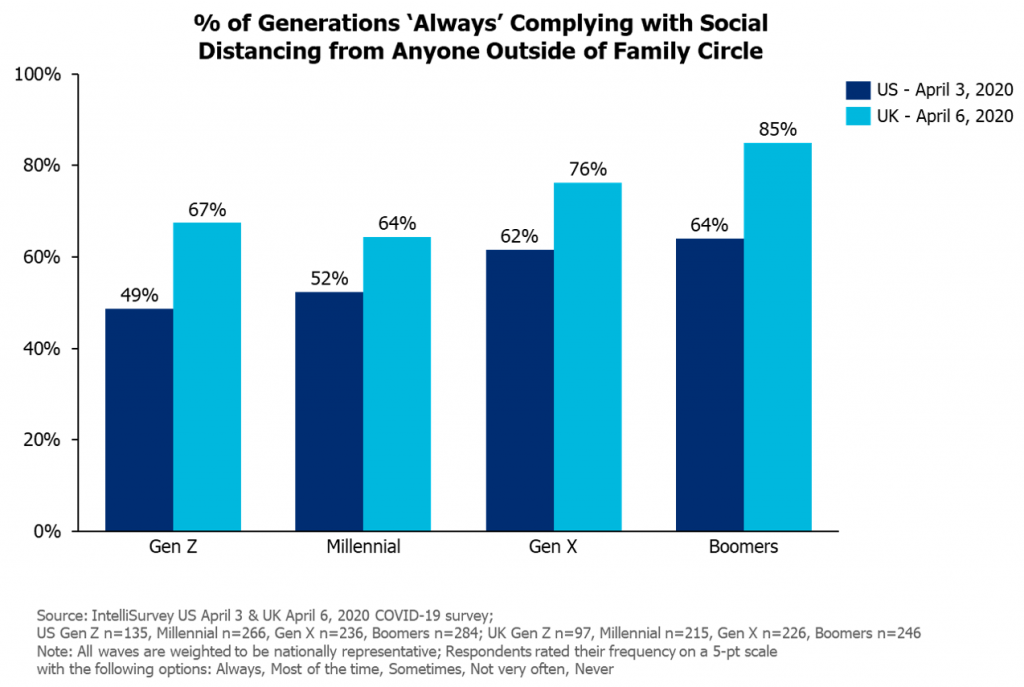
Expectations for having to social distance
The UK (72%) had 6% more respondents expecting to social distance for several months or more, compared to the US (66%). There was a 9% difference in expectation of several months, with more UK respondents (57%) selecting this option than those in the US (48%). All other categories had a 3% or less difference.
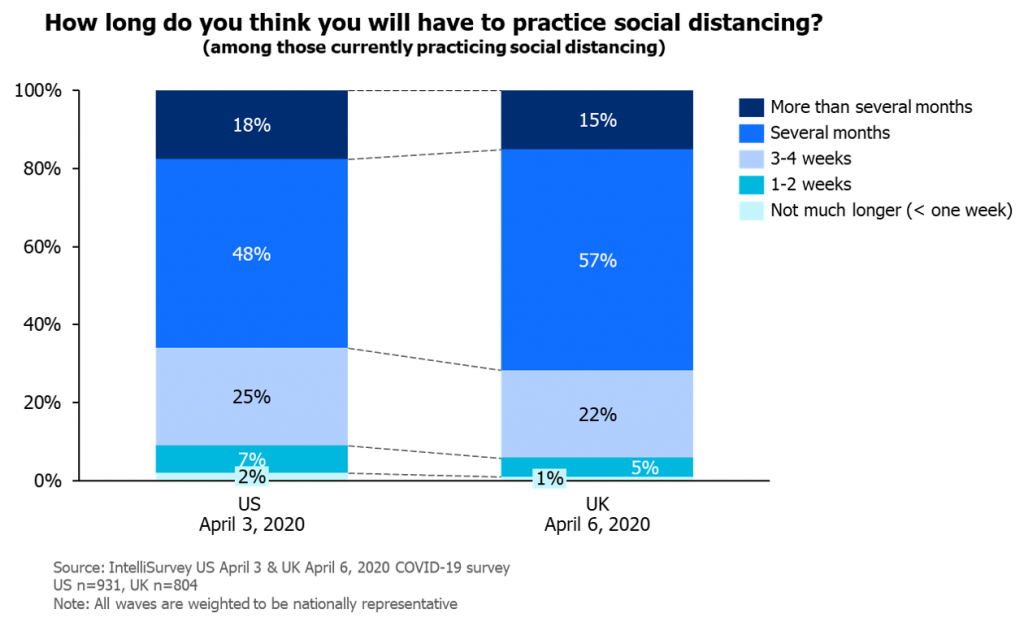
Nations are even in realistically being able to social distance for several months
There are slight shifts between the two countries’ respondents in their ability to realistically social distance. There is a 5% increase in ‘several months’ for UK (39%) over that of US (34%).
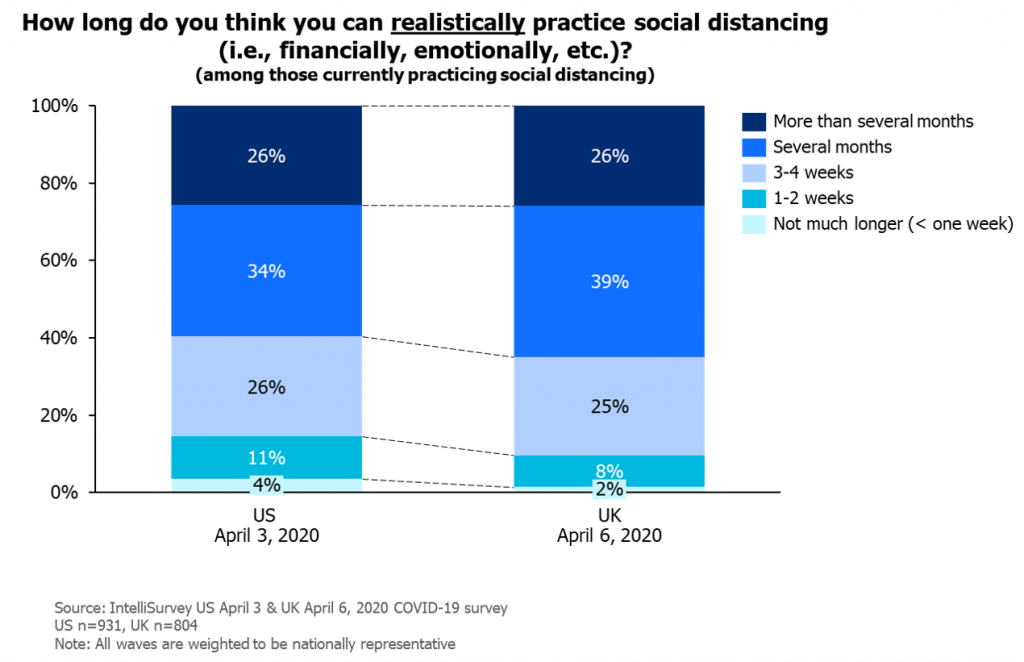
US respondents are hopeful for quickly opening the country for business
UK respondents are far less hopeful that their country will be open by May 1st, than US respondents. There was a 20% margin for the bottom 2 boxes, on the ‘Not Hopeful’ end of the scale, between UK (47%) and US (27%) respondents. At the top end of the scale, US respondents (33%) were over twice as ‘Hopeful’ compared to the UK respondents (15%).
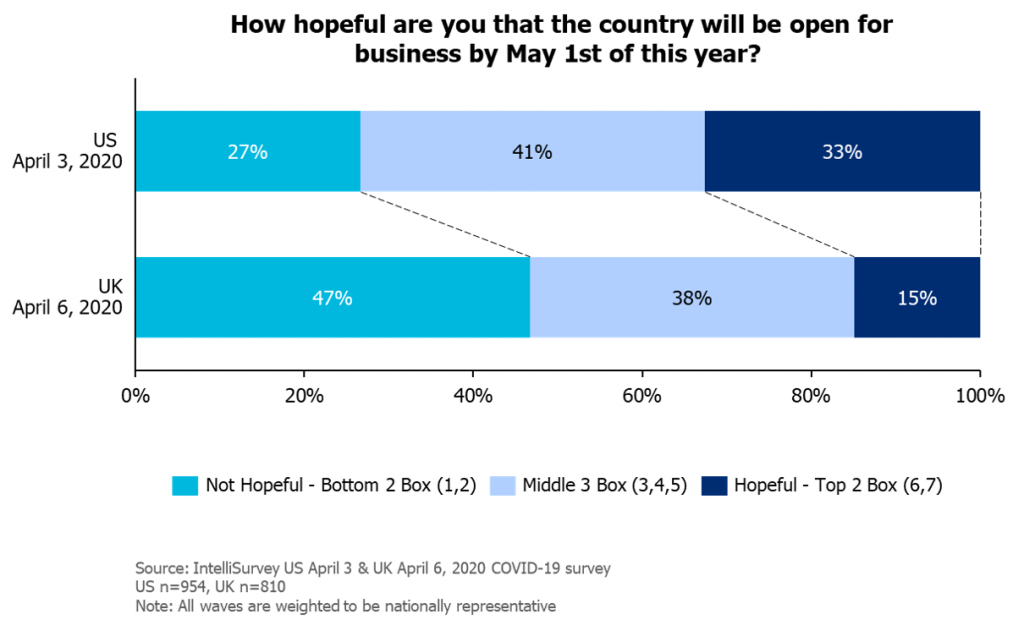
US may be hopeful for a quick reopening, but they are still taking precautions
When asked what precautions respondents were taking during their shopping trips, US respondents tended to have higher rates of precaution taking. In particular, US respondents (58%) are 20% more likely than UK respondents (38%) to sanitize their shopping cart with a wipe before touching it.
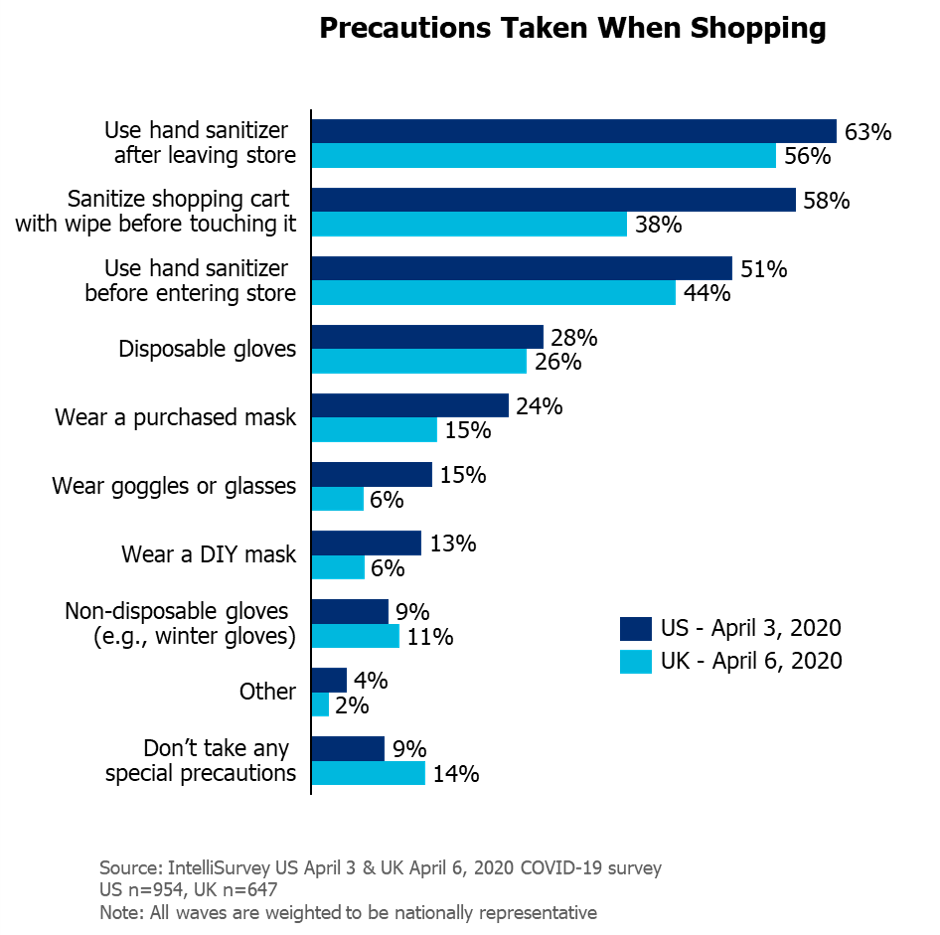
To learn more about how you can help keep your distance and slow the spread, visit the CDC website’s page here for tips. For guidance in the UK, please visit gov.uk/coronavirus.
Respondents for this survey were collected via Lucid Marketplace.
Subscribe to our Monthly Newsletter
Related posts
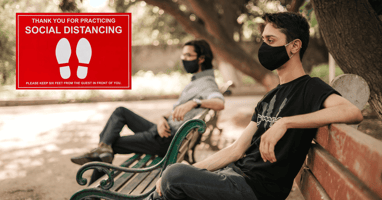

Wishing you could liven up your respondent engagement? Go beyond the typical survey question types...

As smartphones have become increasingly ubiquitous in our daily lives, businesses and researchers...
